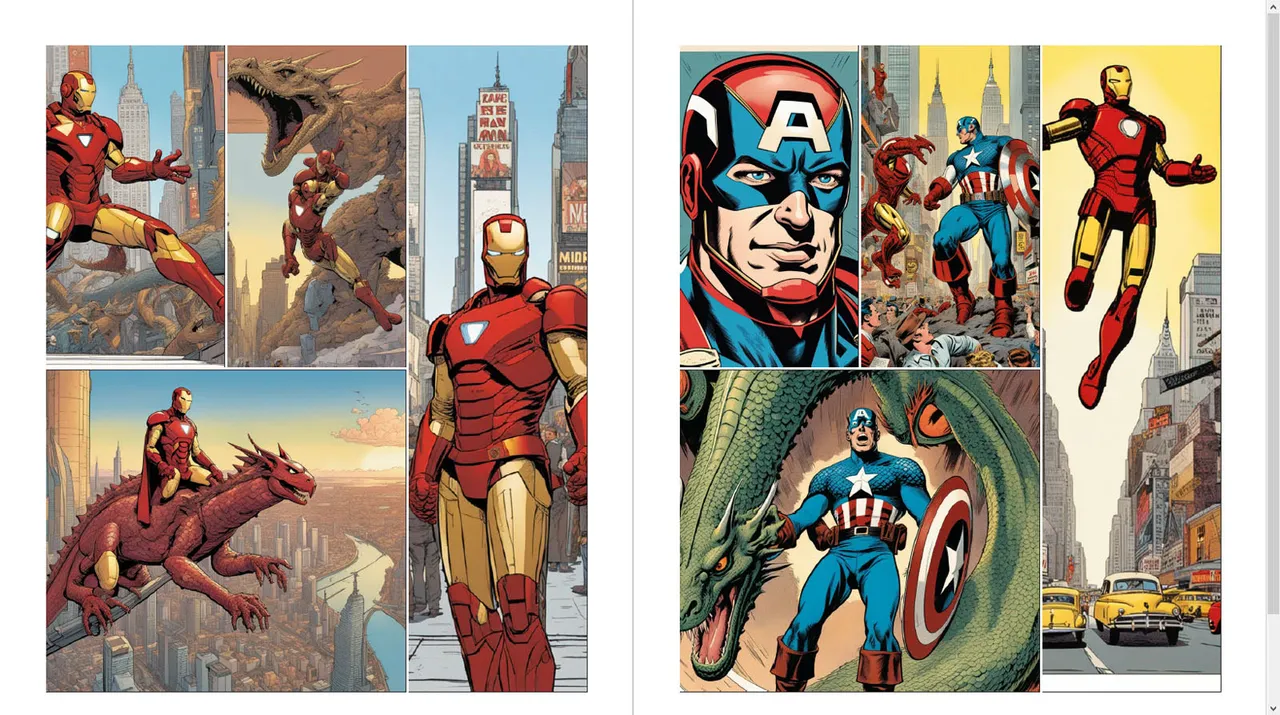In recent years, the world of comics has witnessed a quiet revolution. The familiar routine of pen, ink, and human imagination is now sharing the stage with lines of code and machine learning models. AI-generated comic strips are no longer a futuristic concept confined to research labs; they have become an emerging creative force, enticing both seasoned illustrators and curious hobbyists. This new medium promises to reshape not only how comics are made, but also who gets to participate in their creation.
From Sketchpad to Server: The Evolution of Comic Creation
Comic art has always been a labor-intensive craft. Early cartoonists labored over countless drafts, experimenting with characters, panels, and speech bubbles until they found the perfect composition. The introduction of digital drawing tablets and sophisticated graphics software made that process more fluid, allowing for quicker revisions and cleaner lines. Yet, even with digital tools, artists remained at the center of every stroke. The arrival of AI-driven illustration tools represents a dramatic shift: here, algorithms themselves can propose layouts, generate character art, and even suggest dialogue.
How Algorithms Paint and Panel
At the core of AI-generated comics are deep neural networks—systems trained on vast datasets of existing artwork and textual scripts. When an artist or writer inputs a prompt, the AI process begins by interpreting narrative cues: character descriptions, emotional beats, or setting details. The model then produces preliminary sketches or fully rendered panels, often blending multiple styles or genres. In some systems, a text-to-image pipeline crafts each scene from scratch, while other approaches pair language models with layout engines to assemble complete comic pages. The result is a collaborative dialogue between human intention and machine suggestion.
Creative Freedom and Technical Boundaries
One of the most enticing aspects of AI-generated comics is the speed with which ideas can spring to life. A writer with a fresh concept can see visual interpretations within seconds, exploring variations that would have taken hours by traditional methods. This rapid iteration encourages experimentation and lowers the barrier to entry for newcomers. However, these tools are not without their limitations. Algorithmic outputs can sometimes feel disjointed or lack the nuanced touch of a seasoned artist. Color schemes may clash, perspective might falter, or facial expressions appear generic. Human oversight remains crucial to refine and humanize the AI’s first drafts.
Redefining the Role of the Artist
Instead of replacing artists, AI tools are more often redefining their role. Many creators now adopt a hybrid workflow, using algorithms to draft backgrounds or generate crowd scenes, and focusing their own skills on characters, lettering, or final touches. This blend of machine speed and human sensibility can yield polished comics at a fraction of the time previously required. Moreover, solo creators and small studios find themselves empowered to produce ambitious work without large teams or hefty budgets, democratizing the medium in unprecedented ways.
Ethical and Copyright Considerations
The rapid ascent of AI in art raises important questions. Since these models learn from existing comics—often without explicit permission—issues around copyright and fair compensation have come to the forefront. Some artists worry that their unique styles may be co‑opted without credit, while others see an opportunity to license style data to AI developers. Platforms hosting AI-generated comics will need to establish clear guidelines on attribution and usage rights, ensuring that human creators are acknowledged and rewarded for their contributions.
Peering Ahead: The Future of AI Comics
Looking forward, AI-generated comics promise even deeper integration of technology and storytelling. Imagine interactive panels that adapt to reader choices, or serialized strips generated on demand based on audience feedback. Advances in voice synthesis could transform static speech bubbles into animated, spoken dialogues in digital readers. At the same time, we can expect AI tools to grow more adept at capturing subtle artistic flourishes, narrowing the gap between automated drafts and finished masterpieces.
Conclusion
The rise of AI-generated comics heralds a new era in graphic storytelling, one in which human imagination is amplified by algorithmic speed and versatility. While challenges around quality, ethics, and authorship remain, the potential for innovation is enormous. As artists and technologists continue to collaborate, the humble comic strip may evolve into a living canvas—one that responds to both our creativity and our curiosity, proving that even in a digital age, the power of a well‑told story remains timeless.
Refer to these sources for related topics:
https://rent2010.net/
https://froglinks.org/
https://almenpar.net/
https://compagniefai.com/
https://colturidebucuresti.net/
https://cimots.com/
https://imbookingit.com/
https://arafeina.com/
https://sunglassesoutletsky.com/
https://bestcriminallawyerdelhi.com/
https://stephentyrone.com/
https://myexperttax.com/
https://therapinsider.com/
https://tabernaluciferina.com/
https://samdental.org/
https://claudiakarvan.net/
https://upcollective.org/
https://healthykidsnm.org/
https://ezycleanpest.com.au/
https://launchpadcreative.com.au/
https://directorypass.com/
https://travelntourism.org/
https://traveldistricts.com/
https://dvplegalconsultants.com/
https://dailyghnewsonline.com/
https://anhtutravel.com/
https://charlestonsfastcashhomebuyer.com/
https://trihc.com/
https://homedesignmaine.info/
https://lilihome.net/

